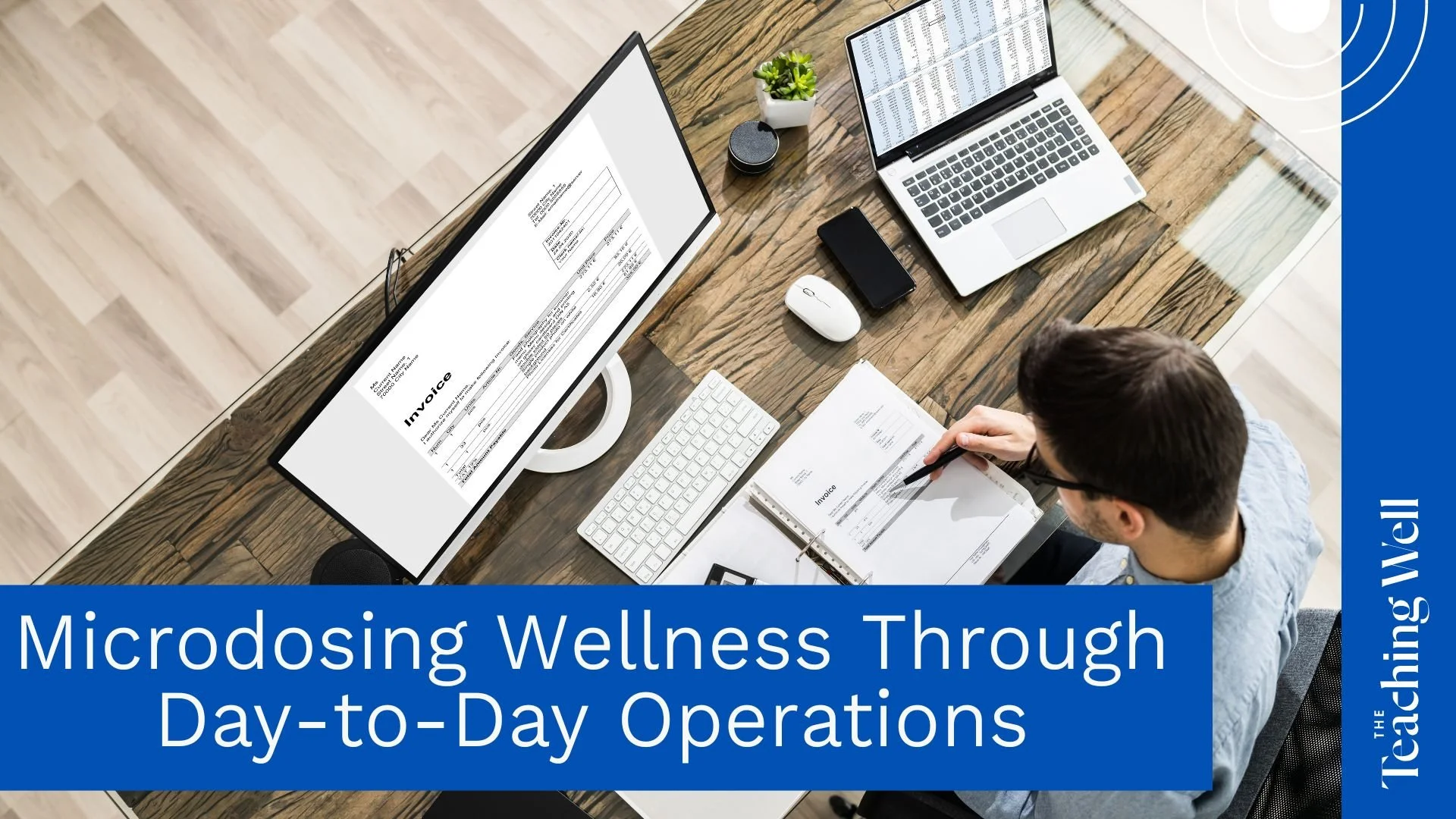Microdosing Wellness Through Day-to-Day Operations
What did the submitted expense say to the receipt?
It might sound like the beginning of a “dad joke,” but to an Operations Specialist the answer is, “Just a bunch of numbers.” The receipts tell the story, so having a clear and easy way to share receipts is an important process for any organization.
Our Operations Team recently rolled out a new protocol and form for submitting receipts in order to get reimbursed. Not too many people jump up and down with excitement over a new form to complete, but on our team, it was met with major celebrations. Here are just a few:
Not to be dramatic but this new Expense form is the best and simplest and most effective form I have ever seen. For real though, thanks for your work on this! So clear and efficient with a touch of pretty! (all my fav things).
Yes! I just submitted like 5 receipts and it was SO EASY!!!
Those past expense forms used to make me dizzy, no joke, thank you!
Things like a reimbursement form might at first appear to be a low priority item, but operational systems like payroll, invoice collection, and customer relationship management have an important impact on the wellbeing of an individual employee and the entire team.
Let’s see how this plays out with some non-examples:
Imagine you are a very busy manager. You usually remember to keep your receipts, but you put off entering them into the reimbursement form. When you finally get around to doing this data entry task, it takes much longer than you really have to dedicate to it. On top of it, you find the form clunky and even confusing. You have to re-teach yourself how to use it every time. Because of this negative feedback loop, the stack of receipts pile up. At the end of the year, you have more than nine months of receipts to enter! It’s so stressful just thinking about this task that you shrug and throw away the receipts, reclaiming your time.
Now imagine you are a teacher who has the extra duty of coordinating all of the outdoor trips for your school. You put more than a dozen reservations on your personal credit card and are assured you can be paid back in a timely manner. In reality, it takes an entire school year for you to be reimbursed! You have now paid interest on the school field trips, and caused a rupture with your partner at home who doesn’t want to subsidize your job. This time, it wasn’t the front-end form that was the cause of friction, but the process for reimbursements on the back-end.
Whether it’s the front-end or the back-end of day-to-day operations that are stressful, the end result for both of these situations is greater than the single incident. Moments like these can breed resentment. It may even cause a reluctance to plan the field trip in the first place or buy the special celebratory lunch for your staff. At its worst, this can cause financial hardship for your employee and lead to attrition.
If you’ve been with us for a while, you already know how we feel about microdosing wellness: we think it’s an important mindset shift. Big sweeping reforms can be great, but the real changes happen in the smaller, daily, incremental ways we care for ourselves and others. Our Senior Operations Manager Emily Perea concurs; her mantra is, “Good operations are invisible acts of care.”
When systems are clear and easy to use, when you take the time to instruct people how to use them, and you add a touch of friendly user-interface, you microdose wellness for your organization. When you have fewer questions to answer and folks are empowered to take care of their administrative tasks on a regular basis, your job becomes more sustainable and you microdose wellness for YOU too!
If you are in the position to design systems and day-to-day operations, you have an important role to play in reducing friction, streamlining deliverables, and contributing to collective care. Let’s visibilize this labor with some Ops Tips:
Think about what is a pain point in your organization rather than trying to solve a problem that doesn't exist.
Break things down by priorities.
Don't try to change too many things at once. Focus on 1 or 2 things at a time.
Consider change management strategies as you roll this out to the team and scan for language accessibility or Operations jargon.
If you aren’t in charge of operations, make sure to appreciate the “little things” because those “little things” make your job a lot easier and constitute the “big things” in someone else’s work stream.

